This is a transcription of an audio lecture, modified for article format:
Meditation is a state of Consciousness; it is a state of being. In that sense, it is something that is natural and inherent to all living things. It is the state of Consciousness when it is unfiltered, unconditioned, and its natural state, without any interference in its ability to perceive and understand. That is the real nature of the Consciousness.
As we are now, our perception and our understanding are filtered. They are conditioned by many factors. In order for us to experience the state of Meditation, we need to remove the Consciousness from its conditioning, and when we can successfully do that, we then spontaneously and naturally experience the state of Meditation. Therefore, you could say that the correct attitude to develop the skill to meditate properly is not to focus attention on trying to reach the state of Meditation, but instead to focus attention on removing the obstacles that prevents it. This is a very significant difference. Most people who study Meditation are seeking the state of Meditation. They are seeking an experience or a sensation. They want to feel something or not feel something. Some people go to Meditation studies and practice Meditation to escape their life, to escape from themselves. Those who are chasing after a sensation or an experience will always be disappointed, because truthfully, real Meditation does not work that way. In the first few lectures we explained that. Today we are going to take those principles a little bit further.
We are going to talk about action and how through our constant action from moment to moment we create a trajectory or a movement across the whole of our life. If we become conscious of our action from moment to moment, we can become very skilled at accessing the state of Meditation. It has to be approached in that way, because the state of Meditation cannot be accessed unless one devotes everything to it; that may sound extreme, but it really does work that way. Meditation is a lifestyle. Meditation requires a very fundamental change in how we behave from moment to moment, how we engage the Consciousness in each moment, how we utilize our energy in each moment, and how we utilize our perception in each moment. All of that united and working together is what makes our circumstances change, so that the state of Meditation becomes more easily accessed, more easily experienced.
If we do not make those fundamental changes in each moment, we will never be able to enter the state of Meditation at will. If we are attempting Meditation regularly anyway, we might be able to enter that state occasionally by accident, and this is what happens with most people who learn Meditation practices. They may learn how to sit properly, they may learn a mantra, they may learn a posture, and they may learn certain type of techniques and rigorously work with them, but because they do not modify how they use their Consciousness and energy during the other twenty-three hours of their daily life, they cannot access the state of Meditation at will, but only occasionally by accident. They may go months or years of trying to meditate, even on a daily basis, but fail to access that state. As a result, they may become frustrated and abandon their practice. This is extremely common, however it does not have to be that way.
If they learn to train their attention for the remaining time of the day that they are not actively sitting and practicing Meditation, then when they actually do sit to practice Meditation it will be easy because they have already been training all day and all night in preparation. That is why today’s lecture is called “Action”.
To understand what we mean by action we are going to look at this image from Tibetan Buddhism of the stages of meditative concentration.
The Stages of Meditative Concentration
This image depicts a gradual process through which the one who wants to access the state of Meditationworks on modifying the relationship of Consciousness (attention) with the psyche (mind, emotion, body). This teaching of the stages of meditative concentration was given by the Buddha Maitreya, so it is a reliable teaching. It is a very profound teaching. It is also a beginner level teaching. It is something that sets forth basic principles that are really useful for anyone who is trying to understand what Meditation is and also to understand where we are in relationship to reaching that experience, and being able to sustain it and reach it at will.

The nine stages of meditative stability.
The very bottom portion represents the experience of the wildest quality of mind: the wild animals (the elephant and monkey) run freely, randomly, without control. The monk (our Consciousness) chases them in hopes of gaining control. This clearly represents the psychological condition of someone who has not yet learned to meditate: such a person has a mind that is out of control, chaotic, and painful. The one who is steadily advancing in their efforts to stabilize psychologically progresses up this winding path, and as you can see the mind represented by the animals gradually become under control. They become stable. They become manageable. At the very top, we see that the monk now has a psyche that serves the interest of the meditator rather than being an opponent. Rather than being a wild animal, it becomes a loyal friend.
This progression from the wild animal to the loyal friend is something very scientific. It does not happen by accident. It does not happen by wishing or believing. It happens because of action: very specific action. The value of this teaching is that it guides us to perform the right actions at the right stages in sequence, so that this consequence naturally arrives: a calm, steady, serene psyche.
Broadly speaking, when we seek to understand Meditation we are trying to transform our current chaotic state — the state of not knowing and the state of pain and suffering — into a state in which we can access profound insight into our fundamental problems.
The Three Trainings
That process is outlined in Buddhism as having three essential stages. These are called the Three Trainings. They are:
- Sila: Ethics
- Samadhi: Ecstasy
- Prajna: Profound Wisdom
In simple English, these terms are ethics, ecstasy, and profound wisdom, but those English words do not convey the full meaning of the Sanskrit words.
The goal is Prajna, which means “profound wisdom.” This is not the wisdom you can acquire from books. Prajna is an active, living intelligence. It is a living force. In Kabbalah it is called Binah, Chokmah, and Kether. It has three aspects. In Kabbalah it is represented by the three supernals, the top three sephiroth on the Tree of Life. In Greek it is the three Logoi or Logos that are written about in the Bible (John 1:1). Those three aspects are a trinity that is represented in all religions. In Buddhism, they are called the trikaya. These are the fundamental bodies or states of experience of any awakened being.
At the highest levels of nature, there is an intelligence, a type of wisdom, a type of understanding that is far beyond anything that our intellect can conceive. That is what is indicated by Prajna. It is a type of penetrating wisdom that can cut through to the substantial heart of anything. It is the wisdom mind of a Buddha, of the greatest masters that you can imagine.
Meditation is the process through which we learn to access that profound wisdom in ourselves. Obviously, that is a very transformative powerful thing. It cannot happen by accident. It happens through action: specific, scientific actions. To reach it, one must know how to access the second of the two trainings, which is Samadhi.
In English we translate Samadhi as “ecstasy.” It is not a physical ecstasy. It is not any type of sensation related to the physical senses. Samadhi is a state of Consciousness in which the very essence of ourselves, the purest heart of who we are, is liberated from its conditioning and it experiences its fundamental state, which is joyful, radiant, happy. That is why we translate Samadhi as ecstasy: it is the ecstasy of the soul, the Consciousness. We do not feel that now because our Consciousness is trapped, conditioned. When our Consciousness escapes conditioning —even for an instant — free of the cage, outside of the hell that it is trapped in now, it feels ecstasy, liberation, happiness, and joy.
Samadhi is a perceptive, active, living state of being. It is not vague or vaporous, elusive or insubstantial. The experience of Samadhi is more real than our physical life. The experience of Samadhi is an experience of our true self or true nature. That is why it is called ecstasy.
Thus, you can understand by simple logic that only in that state of Samadhi — completely free of anger, lust, pride, fear, trauma, any desire — can the essence of ourselves, the Consciousness then perceive clearly and have Prajna, profound wisdom, to see the heart, the true meaning, the true understanding, and the true cause of things.
It is rather obvious when you look at that. It makes sense… If we are trapped in anger and pride, then everything we see is filtered by the anger and pride. If we are trapped in our pain, in our suffering, in our lust, in our envy, we cannot see the truth. We can only see through the filters of those desires.
By liberating the Consciousness from those desires through ethics (the first training), having the state of ecstasy (which is the second training), we can then access third training, which is Prajna.
The First Training
You can only reach the second training, Samadhi, through the first training, which is Sila, ethics. Of course, everybody wants to skip the first step and go directly to the second. Everybody who studies Meditation wants to skip over ethics. Everyone thinks, “I am smart enough, I can just skip that part and go straight to Samadhi, and I am sort of frustrated, so I am going to come up with my own way to do that.” So people study books and traditions, and think they going to make up their own way, but inevitably they fail. They either give up eventually (the most common outcome), or they involved in groups that encourage them to use drugs, sex, alcohol, or other types of stimulants to propel themselves into a “state of ecstasy.” What they fail to realize is that they are breaking the first training. They are not abiding by ethics. Instead of liberating themselves from conditioning, they are adding to their conditioning. They become alcohol addicts. They become drug addicts. They become sex addicts. They indulge themselves in all their desires and think through that indulgence they will understand and liberate themselves. They are wrong, and the proof is in their suffering.
Traditional Meditation practice in every country, in every tradition in the world, starts with ethics. You cannot skip ethics. If you really want to learn Meditation, you cannot skip the first stage. There is a reason ethics are first.
The nature of ethics is scientific, and based on cause and effect.
When training in ethics, we are concerned with the actions that we perform with our Consciousness, and the consequences of those actions.
To develop the first training, we observe our actions and their consequences. If the actions we perform physically, emotionally, and mentally produce conditioning for the Consciousness, those actions must be abandoned, because they contradict our goal of reaching Samadhi and Prajna. That is all ethics are: recognition of cause and effect, and the conscious choice to abandon actions that cause conditioning and suffering, while adopting actions that lead to samadhi, ecstasy.
Stated in another way, on the painting we see this monk at the beginning chasing the elephant and the monkey. The elephant and monkey represent aspects of our wild mind. If we are letting that wild mind do whatever it wants — chase its lust, its interest in sensations, like food, alcohol, drugs, money, violence, sex, TV, video games, buying things, selling things, whatever it is that gets us excited and fascinated — then that animal will just keep running, because it is taking all of our energy. We are letting it be in charge. That is why ethics are essential to begin the path.
It is through our ethics, through knowing how action and consequence work in us, that we begin to calm the wild energy that dominates our lives. For that, we have to understand action and consequence.
1. The certainty of cause and effect.
Action and consequence is an immutable, infallible law of nature. It is the basis of existence in every level of nature, without any exception.
Many people nowadays think that we can do whatever we want, and we should do whatever we want because we’re going to die anyway, so why not? Everyone thinks we might as well do what we want before we die, because they believe that death is the end for us. Those people are deeply ignorant of the truth. They do not understand that death is not our end, it is only a transformation of matter into energy. The Consciousness does not die.
Every action we perform has a consequence that affects us, and that is true no matter what level of nature we live in. Of course, at this moment we live in the physical world, which on the Tree of Life is related to Malkuth, the lowest of those ten spheres. Notice that the sphere is between the heavens, which are above it, and the hells, which are below it. This is something that is taught in every religion and mystical tradition in the world. We are in this in-between place. Every religion tells us that according to our actions we will receive our due. The bible says: Whatever you sow you will reap. In Asian philosophy everyone knows about karma.
The word karma does not mean punishment, but rather it means “action.” It is understood that every action has a consequence. This is the first fundamental truth about action and consequence we have to understand. It is a law. It is not optional. It does not only apply if God is watching, but it applies to everything, in every instant. Every movement of your body produces a consequence.
Nowadays, the physicists who study quantum mechanics have come to realize that even the tiniest, seemingly insignificant movement can produce consequences in the rest of the universe. This is overwhelming the minds of physicists and mathematicians; there is a famous statement about the fluttering of a butterfly’s wing causing a catastrophe on the other side of the world. Mathematically and scientifically it is already demonstrated, and yet we refuse to hear it. We still persist in this idea that whatever we do there is no consequence.
All levels of nature, from the most dense level all way to the most subtle level of nature, exist because of cause and effect. We are just mites of dust drifting through an incredibly complex and beautiful universe. Universes and atoms are both bound by cause and effect. We are also subject to action and consequence, but we ignore it. That is why we suffer.
The first thing that we learn when we enter any genuine tradition at the most basic level is this first thing: action and consequence. Every religion has basic rules: do not steal, kill, drink, sleep around, etc. Those rules are an attempt to codify ethics. Beginners learn to follow those rules so that they can stabilize their psychology. Those who do not follow them remain with their psyche in chaos. Unfortunately, because people always seek ways to get around the rules or morals in order to fulfill their desires, they do not want to understand why those rules exist. People only see those rules as something negative, limiting, confining. People do not realize that those rules are actually the beginning of freedom from suffering.
The most fundamental thing to comprehend about your life is that everything you do has consequences. Just because you cannot see the consequences, it does not mean they are not there. There are consequences for every action. That is an immutable and infallible law of nature.
2. The effects of any action are always greater than the action that produced it.
People completely ignore or get really confused about this fact, but it is not hard to demonstrate. Here is a simple way to test this. When you are with other people, experiment with your tone, with your behavior, with your attitude, observe how your tone affects others. Notice how if you are smiling and happy, that simple choice affects everyone else. That little smile, that act of kindness, affects other people far more than the energy it took to produce that smile. The same is true if you are in anger. That anger will affect people and reverberate like an echo in ways that you cannot perceive. It affects everyone in profound ways. A single word of kindness can have an immense impact on others, just as a single word of cruelty. Even the look on your face can change the course of someone’s life. The effects that we radiate physically, emotionally, and mentally are far greater than the action of producing our attitudes, actions, or words.
We can relate this to the simple fact that if you pick up a stone and toss it into a lake, that little action does not cost much energy to perform, but that stone striking the water can create ripples that go for miles. It can affect every living thing in that lake and be heard by other creatures for miles and miles. It is a simple example, but it illustrates what happens with everything that we do on levels that we cannot perceive with our physical senses. Effects are greater than their cause.
3. You cannot receive the consequence without committing its corresponding action.
Everyone thinks they are going to heaven. Everyone thinks that when we die we are going to go to heaven and God will welcome us with open arms, and all of our family and loved ones will be there waiting for us and everything is going to be great. We fail to realize that the levels of the heavens, of the nirvanas are the levels of gods, angels. Those beings do not have lust, they do not have anger, and they do not have envy like we do, jealousy like we do, fear like we do, and pride like we do. They have their own issues, but they do not have the animal bestiality, the cruelty, the violence, and the potential to harm others, to harm ourselves, that we do. They are not liars like us, murders, rapist, killers, and thieves, like we are. All of those qualities that we have cannot go to the superior worlds; they do not belong there. Those qualities are demonic. They abide in the lower realms. Whatever is heavy sinks, whatever is light rises. This is what happens when we die. We are bound by the trajectory of our level of being, by the quality of our stream of Consciousness. If in our mind constantly flowing and influencing us are all of our desires and fears, and anger, and pride, and lust, and all those qualities, then when we die that is exactly what is going to pull us along through the internal worlds, it is all those qualities. Physical death does not kill our defects, it only returns the physical body back to nature. Our psyche continues to exist as it was.
We receive the consequences of our condition particularly because we are always acting on those conditions. The anger that rises up- we act on it. We do not control it. We do not destroy it. We indulge in it. We feel justified to be angry. The lust comes up, we satisfy it. We let it rule our body, our heart and our mind. How about envy? We feel justified that what other people have we deserve so we act on our envy. We do not understand that envy is demonic and we do not understand that we will receive the consequences for having envy.
Similarly, we cannot access bliss, ecstasy, samadhi, if we have not performed the actions that create that result.
All of us want to be free of suffering, which means that all of us want to experience blissfulness, samadhi. That is the “consequence” we long to experience. But nothing is free. Everything has a cost. The cost is the action that produces the consequence. If you want to live, you have to be born, then breathe, eat, drink. If you want to experience samadhi, you have to abide by the ethics that produce samadhi.
Samadhi, ecstasy, is the state of experience that happens naturally when the Consciousness is not conditioned by desire, lust, anger, envy, pride, etc. To experience samadhi, we must produce the action that leads to it: we must extract the Consciousness from the limiting conditions. There is no other way to access samadhi.
Samadhi, the second training, is a result of action. Produce the corresponding action (ethics, the first training), and samadhi will happen: it is a law of nature. It cannot be any other way.
However, if we do not produce the corresponding action, which is ethics, the first training, then we will not experience samadhi, whether here and now, or after death.
4. Once an action is performed it cannot be erased.
People believe that as long as no one sees us perform an action that we can do whatever we want, or even if people see us, who cares. We still are going to do what we want to do and who cares. We may think that right before we die we will beg God for forgiveness and we will accept Jesus as our savior and so we will go to heaven anyway. We can just do whatever we want up until the moment we die and right the last minute the priest will come and say “I forgive you my son and you can go on to heaven now.” Reality does not work like that. The hell realms are filled with people who thought that way. The truth is that every action has consequences (#1), the consequences are severe because the effects are greater than the cause (#2), and everything we do is done: it cannot be undone or erased. We can apologize or try to make amends, but no action can ever be erased from nature.
Every action we perform has a profound reach.
Reality is not the way our desires want it be.
When people hear about these laws of nature, they get very uncomfortable and do not want to hear anymore and want to go where they are going to be made to feel better, but the truth is these four fundamentals of action are laws of nature. They are not good or bad. They are just what they are. Someone who has training can turn these four laws to their advantage.
The law of action and consequence is what makes liberation possible.
Instead of indulging in bad behaviors, desire, anger, lust and all the other qualities that cause suffering, if we choose to adopt the superior way of being, then we take advantage of these laws.
Superior actions produce consequences (#1), create effects that are greater than their cause (#2), bring the consequences we want (#3), and once the actions are performed, it cannot be erased (#4). This is how we tip the scales of justice in our favor. This is how we can negotiate our karma: by constantly performing superior actions.
These four qualities of action are explained in the Lam Rim (The Great Treatise on the Stages of the Path to Enlightenment: The Lamrim Chenmo) by Tsongkhapa, who is an incredibly important master of the Buddhist tradition.
What was not explicitly stated as one of the qualities of karma is a fifth, which is:
5. A superior law always overcomes an inferior law.
This is implicit in all religions. This is the hope and faith of humanity: that evil can be overcome, that suffering can be overcome, that happiness can be acheived, because a superior law overcomes the inferior law. Therefore: we need to know what the superior laws are. We need to perform superior actions.
If you perform a superior action, you can overcome your mistakes. You can choose to adopt a higher way of being, to take a higher path, to renounce the actions that cause suffering and to begin to perform the actions that produce happiness, that produce liberation.
We need to study how that happens in our moment to moment experience.
The Two Lines
The line of life describes our experience from birth to death. You could say this is the line of time, because it applies to us while we are incarnated in a body, but from a wider and more compressive view it also applies to us from existence to existence. We can consider it as the course of our Consciousness through all of its experiences: through many births and deaths. From this perspective, we can say that it is a measurement of our experience of existence, no matter the condition of our matter and energy (whether in a body or out of a body). Whether we are physically alive or physically dead, the energy of our actions is still propelled. Physical death does not end the movement our actions towards consequences. Death is just a transformation, not an end. The energy is still moving.
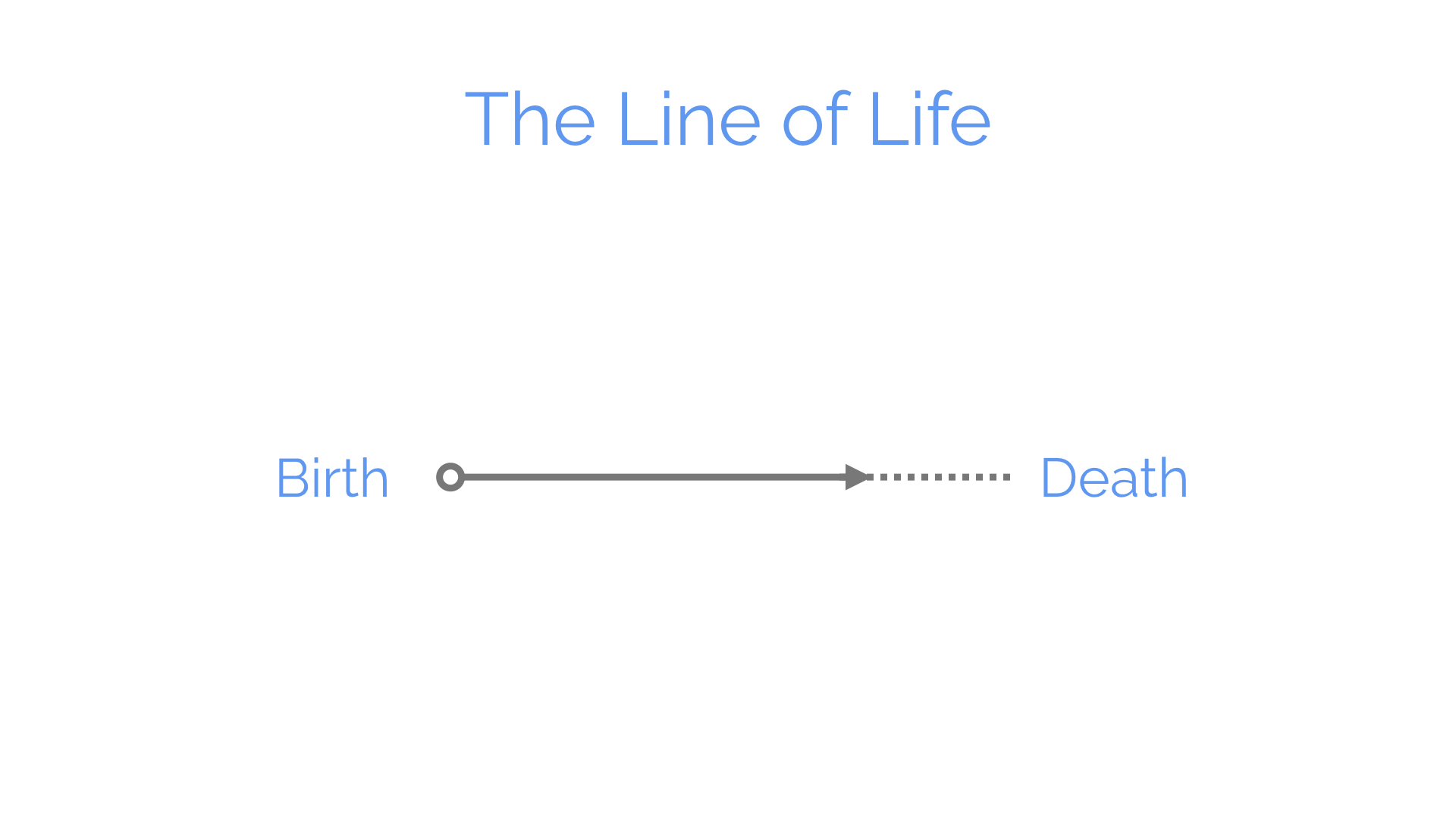
Albert Einstein explained that energy does not die, it simply changes form. Therefore, regarding all of the energy that we have put into motion through our moment to moment actions throughout our lifetime: where does that energy go when we die? The physical body dies, but all of that energy is still moving, and that is what produces our next existence. (You can learn more about this in the course Death and the books Beyond Death and Hell, the Devil, and Karma).
The key thing is that we are in a physical body now. We have this incredible machine that has incredible power, and if we are smart we can utilize that physical matter to transform energy in a very powerful way to produce incredible change.
In each moment, we are drawing closer and closer to death. We do not know when. It could be today, or it could be tomorrow. This is an unknown to us, and from moment to moment, from instant to instant, the distance between this moment and death is shrinking. Every expenditure of energy is advancing us towards death, but to our disgrace we do not know whether our use of energy is raising our level of being or lowering our level of being. Therefore, we need to study an additional line, which is the line of being.
The line of being is vertical, and it is intersecting the line of life exactly in this moment. The point at which these two lines cross is this very instant, right now.
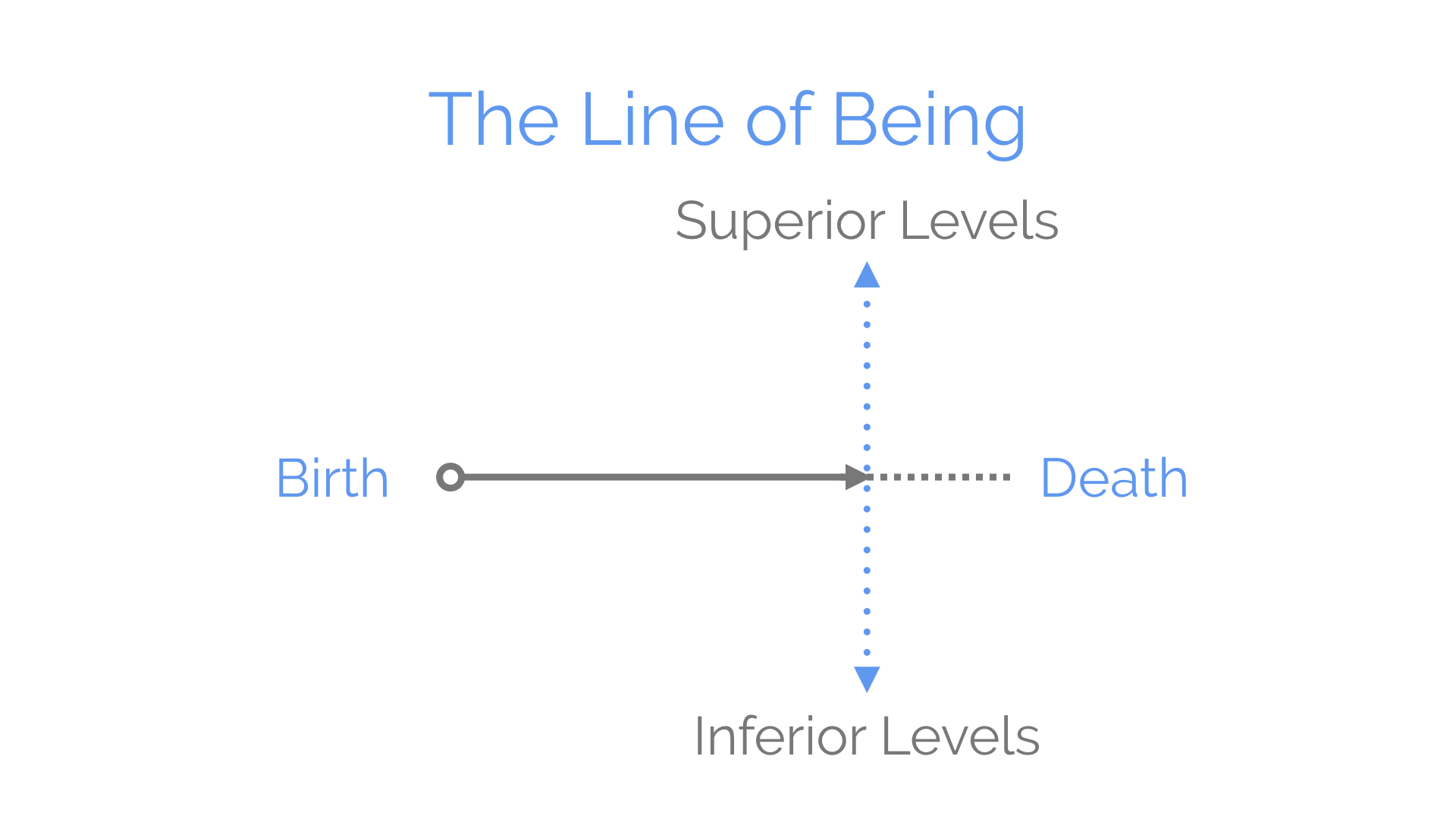
In every moment, according to our condition psychologically, we have a “level of being.” That level of being is the vertical line of the Tree of Life: the heavens and hells. Yes, we are in a physical body that corresponds to the sephirah Malkuth, and yes, all of the rest of the sephiroth of the Tree of Life are within us, but where is our center of gravity? Where on the Tree of Life are we rooted in each moment? What are the factual qualities of our mind and heart?
Set aside the cherished belief that you’re as good as you think you are. Instead, look at the facts of what is happening from moment to moment in your mind, in your dreams, in your reactions to events. Do you feel anger, lust, pride, fear? Are you awakened in your dreams, capable of consciously traveling the internal worlds as you wish? Can you come and go in the heavens to talk with the beings who reside there? Or do you feel most at home in a bar, in a brothel, in a battle field of some form?
If our mind is characterized by doubt, fear, resentment, envy, lust, jealousy, and all those types of qualities, then our level of being is very low. It is in the demonic levels, the animal levels. Those qualities belong to demons and all the beings that are in the vibration of hell. Honestly, when we are very sincere with ourselves, we will see that it is the case for humanity. Humanity is not an advanced civilization. It is a very animalistic, very cruel, very violent civilization, that does not have any interest in profoundly developing generosity, Chastity, patience, or conscious love. This society has no interest in virtue, ethics. Our society wants sex, money, and to dominate others. That is all animal. That is demonic, and we all have that. Our level of being as a world and as individuals is very low on the scale of things.
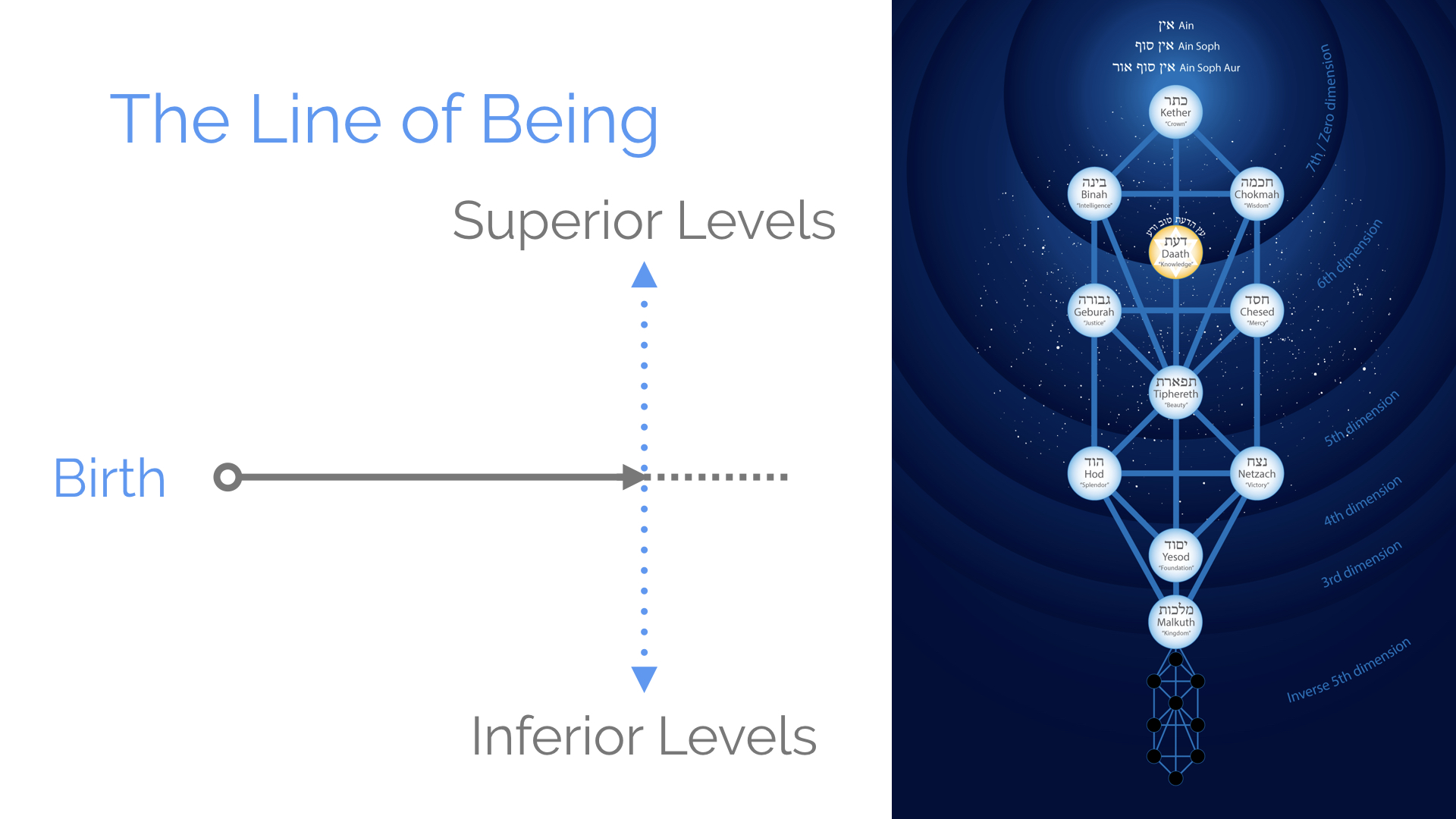
However, we can take advantage of action and choose to adopt positive behaviors. We can choose to advance ourselves from moment to moment by choosing superior types of actions physically, emotionally and mentally. We can raise our level of being, little by little, step by step, from moment to moment.
We can consciously take control of our animal mind, dominate that animal, train it, and convert it from an adversary into a helper. That is a difficult process, but it can be done, it has been done, and it will be done by anyone who takes this seriously.
When we meditate, we want to experience the superior levels. To do so, we have to produce the actions that result in those consequences. The experience of Nirvana, of Samadhi, of entering the heavenly realms, of going out of the body and having spiritual experiences are the consequences of action. This is scientific. Experiences do not happen by accident. They happen because of cause and effect. If our interest is to reach Samadhi (the second training) and then Prajna / wisdom (the third training), we can do it, but we must produce the actions that create that result. As explained already, this means we need to work on sila / ethics, the first training.
The first training, ethics, should be applied all the time, specifically in our daily life and also during our Meditation practice. If we are afflicted with pain, anger, resentment, doubt, fear, those qualities can only take us to hell since they belong to hell. If we want to be free from suffering, then we need to free ourselves of the qualities of the lower realms. To do so, we have to see those qualities factually, in terms of cause and effect. Anger can only create pain. Envy only creates pain. Lust only creates more lust and more suffering. In each case, by seeing the facts of those qualities, by seeing them for what they are, only then can we extract ourselves from them. Only then can we adopt superior action.
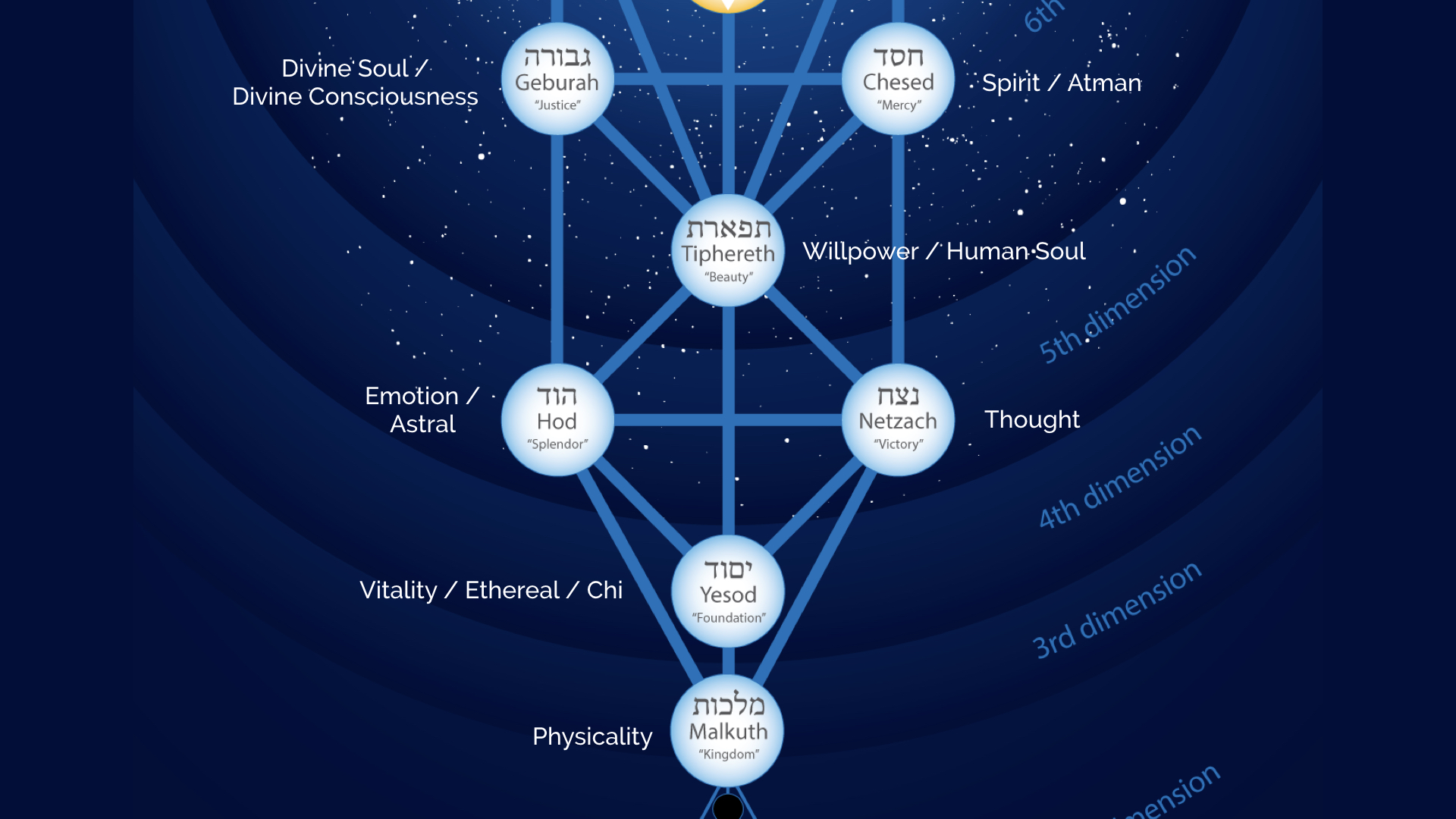
When we sit to meditate, we are in our physical body (Malkuth). Most people when they practice Meditation remain in their physical body throughout their practice, because they do not know they should let the body go so the Consciousness can be free of its conditioning. So they may have music playing, incense burning, they may have somebody talking next door or a dog barking next door, and so they sit and they look like they are meditating, but really they are listening to all those sounds, they are smelling the incense, they are feeling the pain in their back, or their knee, or their leg, and their attention is 100% absorbed in the physical sensations. That is why they never experience the state of Meditation because they are producing the action that results in staying in the physical body. Attached to physicality, focused on physicality, they cannot leave it. They are not adopting a superior action.
Some people become relaxed enough to extract attention from the physical senses; they start to feel other types of sensations. They may feel like they are starting to blow up like a balloon. They may feel like they become extremely heavy or extremely light. They may feel that even though they can feel the physical body, they also feel like they are leaning to one side or another, and it feels strange. This person is starting to extract their attention from physicality and is becoming aware of the energy of that body, which is in Kabbalah called Yesod, the foundation. That is the foundation of the physical body. That is the body of Chi, the vital body.
Someone who is able to relax further then becomes more attuned to what is happening emotionally. They may start to see images, visions, and this is related to the astral realm, the world of dreams (Hod).
More subtle is thought (Netzach), more subtle is will (Tiphereth), more subtle is Consciousness (Geburah), and even more subtle than that is spirit (Chesed). There is a progression. The meditator who is very careful in using attention, who wants to enter into the superior worlds, does it simply this way: extracting attention from each level, and centering the attention deeper and deeper within itself, within the Consciousness itself.
In synthesis: let go of the physical body, leave it alone, let it rest, forget about it. Take all the attention inside. Shut the physical senses down. In other words, we extract the Consciousness from the physical body. We proceed to do the same with every perceptible phenomenon within us: energy, emotion, thought, memory, analysis, visions, etc.
This process of withdrawing attention is the same process of entering into the heavenly worlds from level to level. The more you can withdraw the Consciousness from being fascinated by what it perceives, the higher you can go in your absorption states, in your Samadhi, and therefore the greater wisdom you can discover.
Anyone can do this. It is just a matter of producing the action. Here and now we start with working with our moment to moment experience.
The Five Centers
We have five centers of psychological activity.
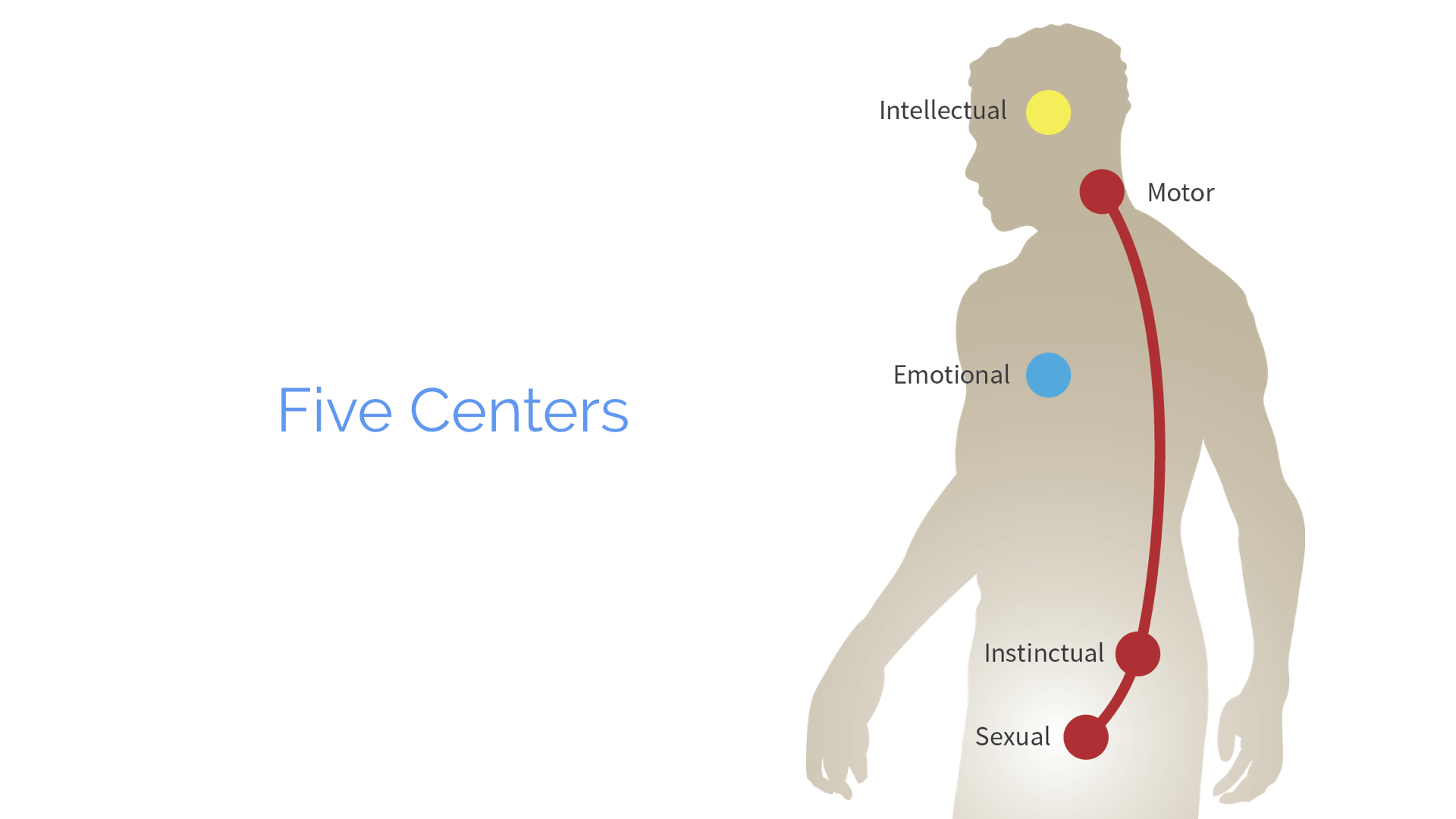
The intellect is where we experience thought. It is related with our physical brain.
The emotional center is related with our heart, the center of our chest. It is where we feel emotions.
The motor, instinctual and sexual centers are more subtle, but if we observe ourselves we can see how each one behaves. The motor center is where we learn behaviors, such as how to move the body, how to drive a car, how to walk, how to run, how to use a keyboard and a mouse, a computer, and how to perform our job. Those are motor skills. The instinctual center is the base of the spinal column, and that is where our instinctual behaviors are controlled. There is a center of intelligence there that manages all those animal instinctive types of behaviors, like preservation of life. Finally, the most powerful and the most difficult to deal with is the sexual center, which is the one that creates all of these other ones. We are born through sex and we are controlled ultimately constantly in every way by the sexual energy.
How we use the five centers produces consequences from moment to moment, so we need to become aware of them from moment to moment, and be in control of them.
The two lines intersect in this moment, right now. If we want to raise our level of being now, and continue raising it, then we need to know: what is happening in the intellect? What is happening in the emotional center? What is happening in the body?
To observe oneself is an action. To control oneself is an action. To choose to think is an action. To choose emotion is an action. How we use energy through these five centers creates our life.
Everything about ourselves on every level exists in its current condition because of how we used these five centers throughout our previous lifetimes up until this moment. This is a very profound statement and I invite you to reflect on it very seriously.
Your experience right now — the state of your life — is the result of all of your previous actions, not only through your physical body, but also through your emotions and your thoughts.
All of that – your physical actions, your emotional actions, and your mental actions – are all produced by willpower. You wanted to do what you did. That will is Tiphereth, here in the center of the Tree of Life. That is the Human Soul in Kabbalah.
Will (Tiphereth) takes our energy and uses it through thought, emotion, energy, and physicality.
What gives will the ability to act? It is the Consciousness that flows through it, and that Consciousness is Geburah on the Tree of Life.
What gives the Consciousness existence is the Being, the Spirit, Atman, our own Inner Buddha, which is Chesed on the Tree of Life. Chesed exists because of the three sephrioth above it. So you see the interdependence of the parts of the tree, and how energy moves through us from the most subtle levels to the densest.
All of that is manifesting here in our five centers right now.
The potential for liberation is not in the future. It is in this moment, and it is a matter of how you choose to use the energy that is flowing in your five centers from moment to moment. It is a matter of choosing superior actions instead of inferior ones. For that you have to firstly pay attention. You have to be observing phenomena, not caught up in thinking, emotions, or physical sensations, but consciously observing all phenomena. That does not happen automatically or mechanically or on autopilot or just because you heard about it. It is an action of observation. It is an active use of energy from moment to moment: to actively observe our way of thinking, our way of feeling, and our way of behaving physically. If we learn to do that, we can change the trajectory of our experience.

If we want to be what we are not, we first have to not be what we are. That means if we want to raise our level of being, if we want to go up, to not be a demon or an animal, but to become a real human being and more, we have to first stop being an animal and stop being a demon. We have to renounce harmful manners of behavior and choose better ones. To do that, we have some exercises that we can use.
Exercises
First, observe yourself. Take it seriously. Make a commitment to really develop the sense of self-observation. It is a sense. It is not a belief. It is not a theory. It is not just something that we like and agree with. It is an action that has to be continually performed. It is not easy, especially in the beginning. It is very difficult because we do not have that sense trained. This is why in this image in the very bottom we see the monk trailing far behind the animals, but he is looking towards the animals to observe them. But you also see over here this raging fire and that fire represents how much energy it takes in the beginning. So beginners always tell us, “I am trying to observe myself, but I am so tired, it is so hard.” And they think, “I’m doing it wrong,” but actually they are doing it right; at first it is exhausting. It is like when you first start going to the gym or you first take on a new diet or a new job, something totally new to you that you are not familiar with. It takes a lot of energy to learn. Self-observation takes much more energy than any sort of mundane type of endeavor because you are not just harnessing your physical senses, you are learning to use your conscious senses. That requires energy that is much more subtle, and we have no training with it. Our society does not encourage this behavior at all. At every turn society wants us to remain hypnotized, mechanical. Society does not want us to self-observe.
This is the first exercise: make the effort to develop your self-observation.
The second is to begin a daily review of what you observed during the day. Every night at the end of the day, sit and relax, close all your senses down, and review in your mind’s eye the facts of everything that you observed that day. It is how you are reconstructing a filmstrip or a movie, like security cameras that recorded everything you did all day. Your security camera is your self-observation. You are going to record just the facts. Try to remember everything you can. No analysis, just observation of facts. Do not interpret them, or speculate about them. Just gather the facts.
Finally, the third is to begin a spiritual diary:
Download: Practical Spirituality 02 Spiritual Diary PDF
We have prepared a list. It is a short list of questions that you can start to use to stimulate yourself to become more aware of your spiritual life.
Even though it may seem silly to you, if you actually use the spiritual diary it will change your life. It will show you what you do not want to see about yourself, and that is precisely its value. It is to show you things that you willfully ignore. Of course, firstly you have to use it, and secondly you have to be honest.
You can use the spiritual diary in the way that you see fit. If you want to just try it for a week to see how it goes that is fine. If you do not want to use all the questions provided, that is fine too. It is a resource that you can use that is designed to provoke observation. How far you take that is entirely up to you.
This information was originally published on gnosticteachings.org. You can find more lecture transcripts by visiting them online.






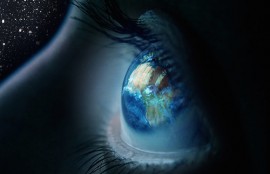









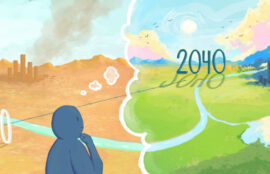


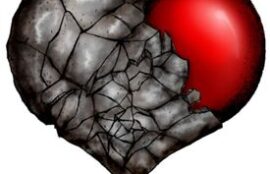


Sorry, the comment form is closed at this time.